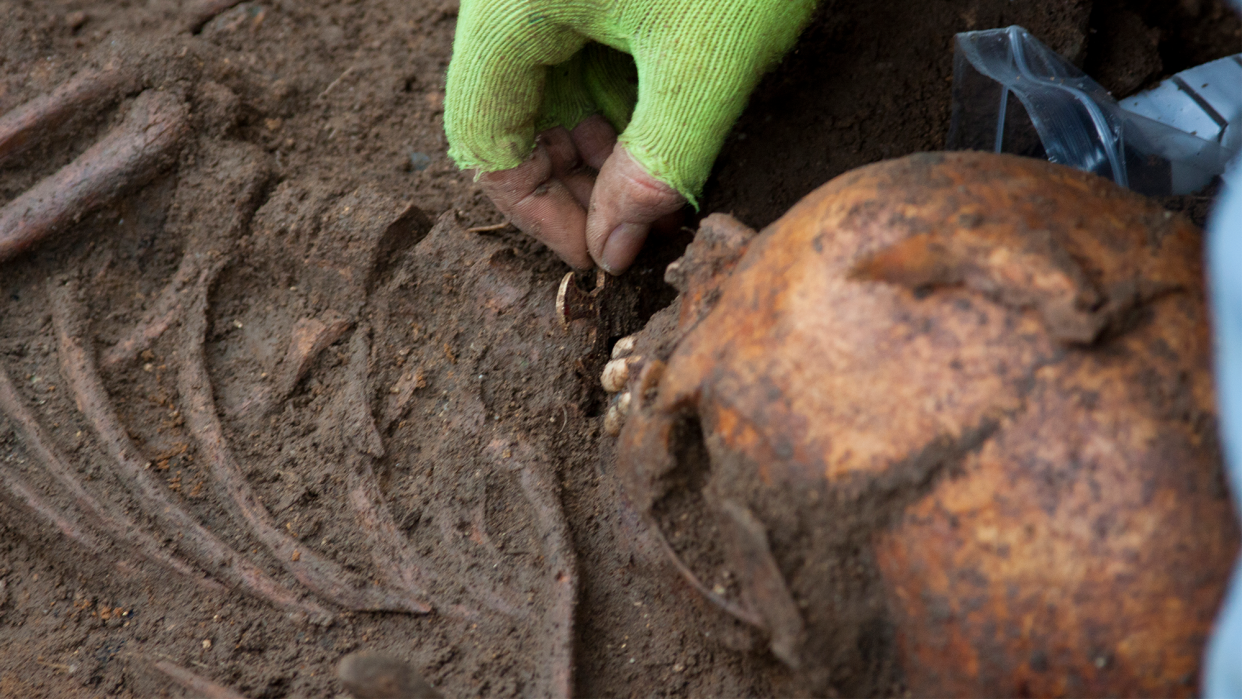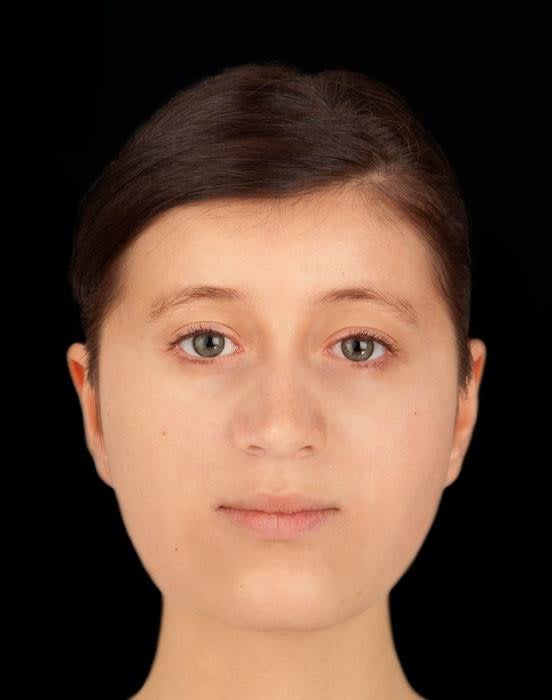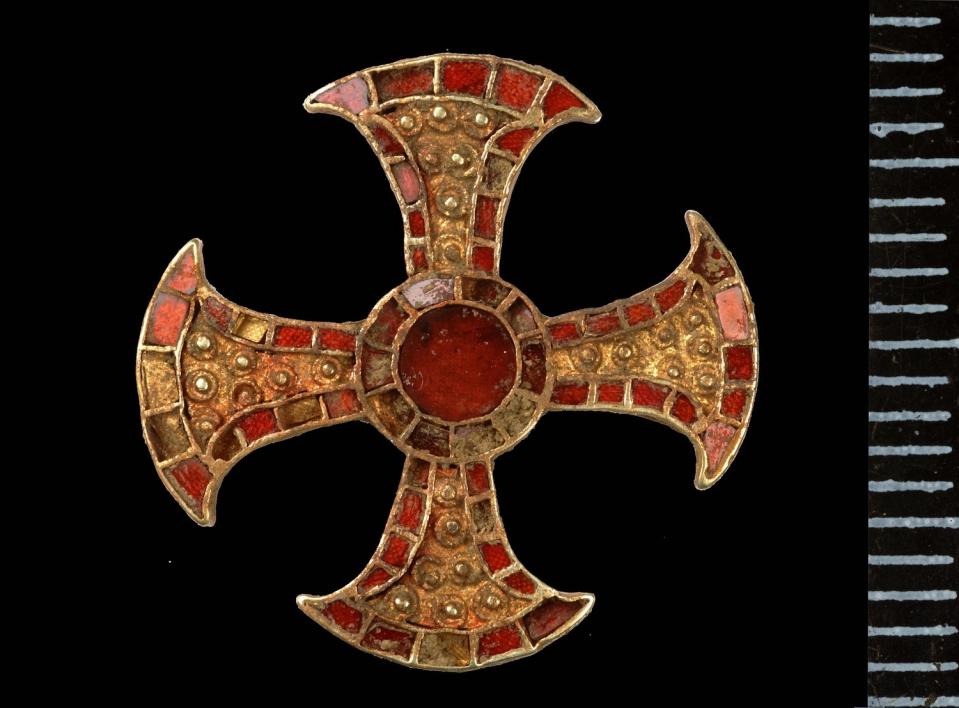This 7th-century teen was buried with serious bling—and we now know what she may have looked like

- Oops!Something went wrong.Please try again later.
Skull analysis is helping archaeologists in the United Kingdom reconstruct the face of a 7th century CE 16 year-old-woman. The woman was buried near Cambridge, England with the Trumpington Cross, an extremely rare gold and garnet cross.
[Related: The Roman Britons cared a lot about hair removal, and it shows in artifacts.]
The artifacts were first discovered in 2012 by the Cambridge Archaeological Unit at Trumpington Meadows. A forensic artist created this teenager’s likeness using measurements of her skull, as well as data on the tissue depth of Caucasian females. Precise hair and eye color couldn’t be determined without DNA analysis.
“It was interesting to see her face developing. Her left eye was slightly lower, about half a centimeter, than her right eye. This would have been quite noticeable in life,” Hew Morrison, a forensic artist from Inverness, Scotland, said in a statement.

Bioarcheologists conducted isotopic analysis of her bones and teeth, which revealed that she moved to England from somewhere in Central Europe after she turned seven. They deciphered that the proportion of protein in her diet decreased by a small amount, but it was enough to make a difference towards the end of her short life.
“She was quite a young girl when she moved, likely from part of southern Germany, close to the Alps, to a very flat part of England. She was probably quite unwell and she traveled a long way to somewhere completely unfamiliar – even the food was different. It must have been scary,” bioarchaeologist Sam Leggett from the University of Edinburgh said in a statement.
Earlier analysis of her remains indicate that she suffered from illness, but could not reveal the exact cause of her death. According to the team, her burial itself is remarkable. She was laid to rest on a carved wooden bed, wearing the ornate Trumpington Cross, fine clothing, and gold pins.

Only 18 bed burials have been uncovered in the UK, and this ornate cross made with gold and garnets is one of only five of its kind that have ever been uncovered in Britain. The best known example of this kind of cross was found in the coffin of St. Cuthbert in Durham Cathedral. It likely identified the teen as an aristocrat or royal and one of England’s earliest converts to Christianity.
In 597 CE, Pope Gregory sent St. Augustine of Canterbury to England on a mission to convert the pagan Anglo-Saxon kings. This process continued for many decades and even included a mass baptism on Christmas Day 597.
[Related: A lost ‘bawdy bard’ act reveals roots of naughty British comedy.]
“She must have known that she was important and she had to carry that on her shoulders. Her isotopic results match those of two other women who were similarly buried on beds in this period in Cambridgeshire,” said Legget. “So it seems that she was part of an elite group of women who probably traveled from mainland Europe, most likely Germany, in the 7th century, but they remain a bit of a mystery. Were they political brides or perhaps brides of Christ? The fact that her diet changed once she arrived in England suggests that her lifestyle may have changed quite significantly.”
The Trumpington Cross will be displayed with the delicate gold and garnet pins connected by a gold chain at a new exhibition in Cambridge’s Museum of Archaeology and Anthropology starting this week, alongside the forensic image of what this young lady may have looked like.

